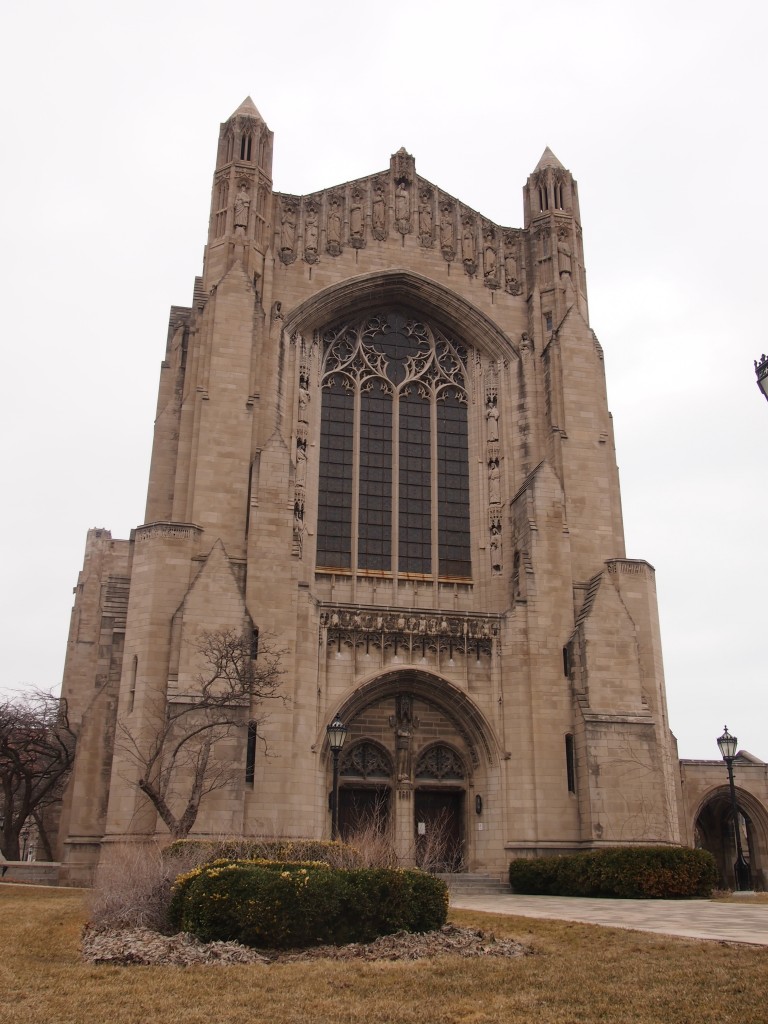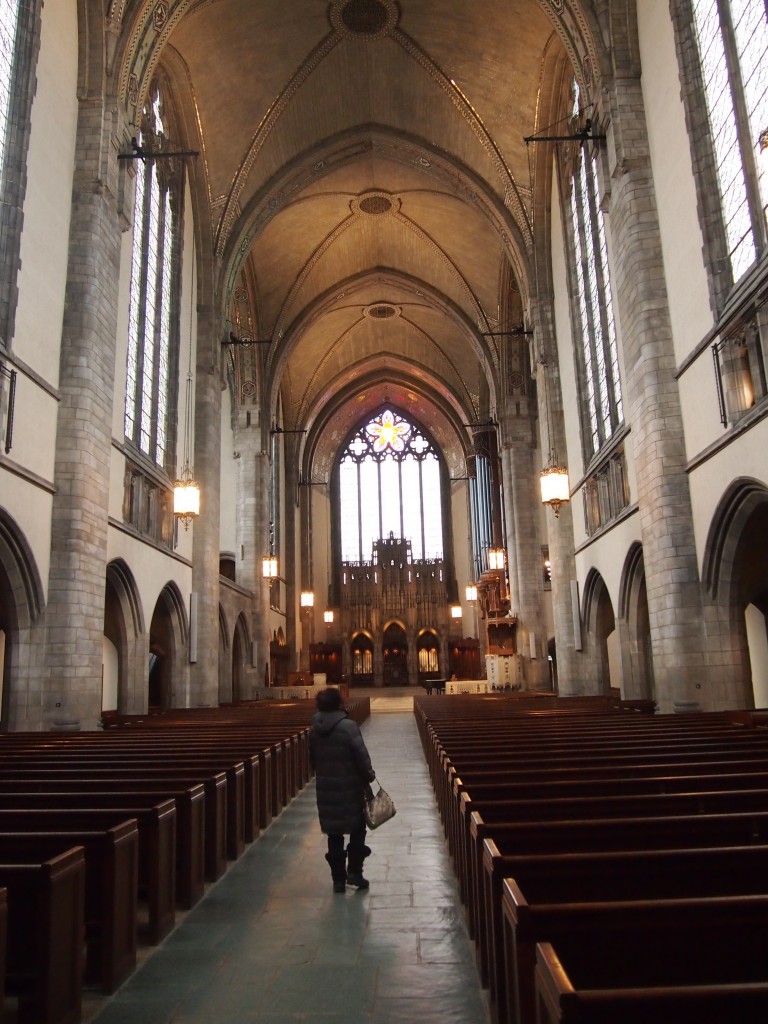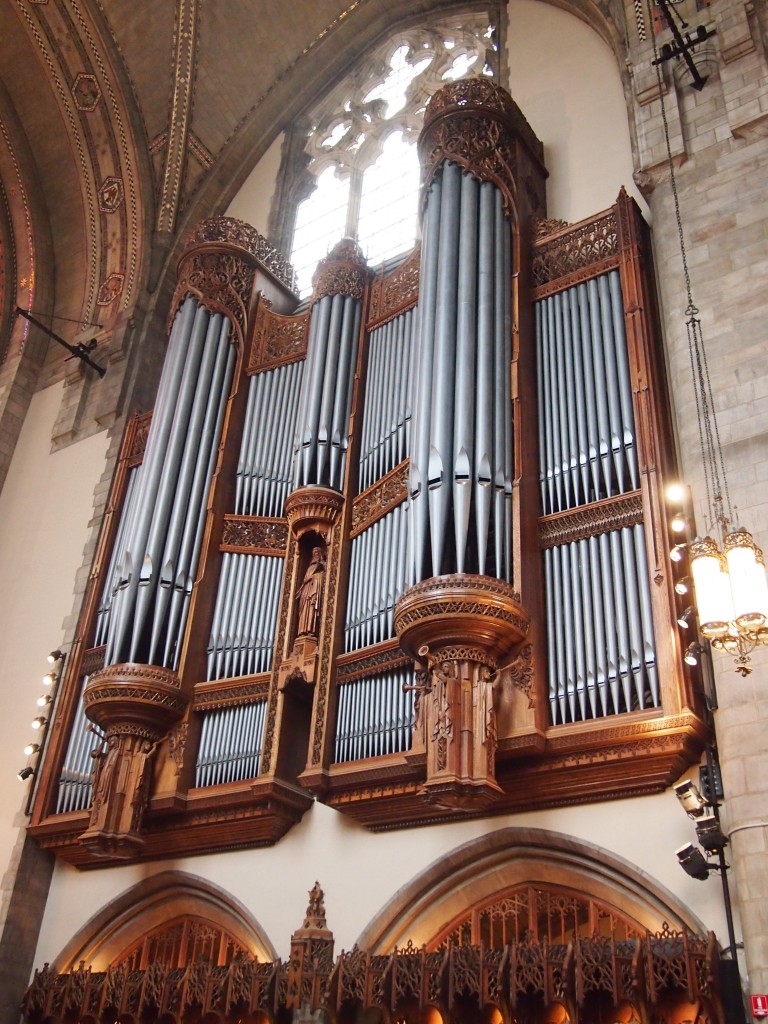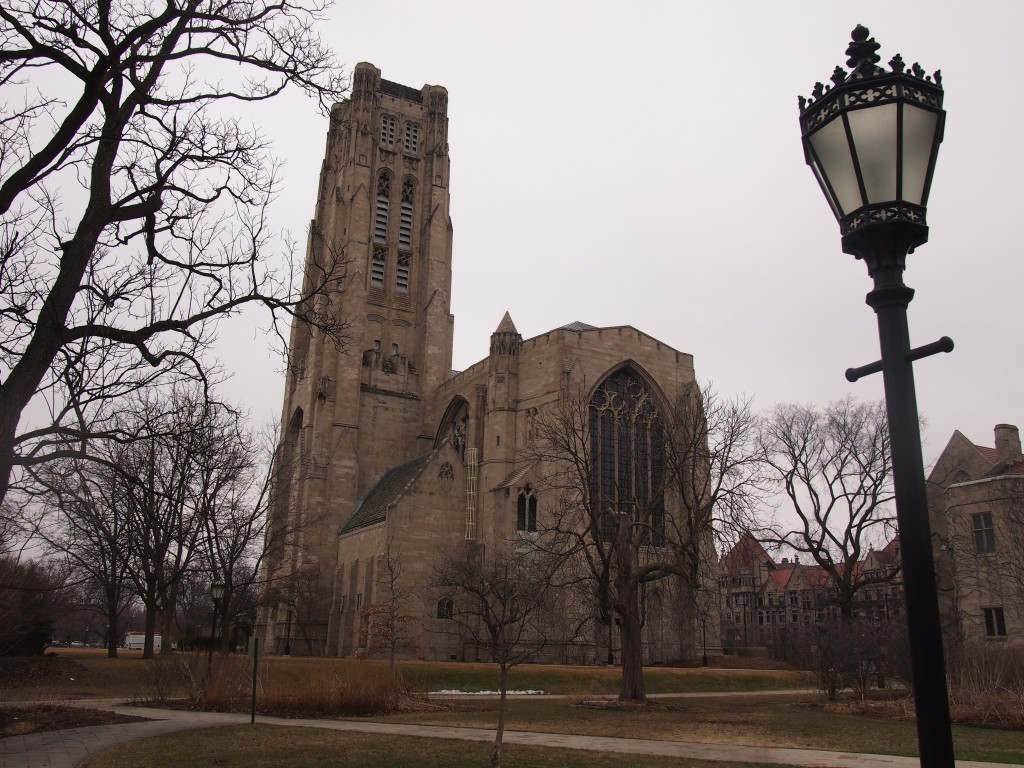Nearly 11 years ago, I wrote, regarding the Rockefeller Memorial Chapel at the University of Chicago and clearly impressed by its size, “John Rockefeller thought big. The structure is huge. A big Gothic thing. I knew that, of course, having passed by it a number of times over the years, but it hit home when I wandered inside. I was the only one there. The glass is mostly clear, so the angled summer sun lighted the place. Several doors were open, so there was a breeze — unusual in such a large church. For large it was, as large as many cathedrals I’ve seen.”
None of that has changed in 11 years, except there was no summer sun or warm breeze last Friday.
Some vital stats, to save a Google search: The chapel is 265 feet long and 102 feet wide at its widest point. The tower, towards the northeast corner, is 207 feet high and can be ascended via a spiral stone staircase of 271 steps. The chapel weighs 32,000 tons, and 56 concrete piers carry the foundations down to bedrock 80 feet below the floor. Its design includes no structural steel.
This is the chapel from the front.
 From the back, which shows the 72-bell carillon.
From the back, which shows the 72-bell carillon.
 The organ is sizable, too. According to the chapel’s web site, it’s an E.M. Skinner creation, vintage 1928, that originally “included four manuals, and had 6,610 organ pipes in 108 ranks; since its 2008 restoration, it now has 8,565 pipes in 132 ranks.” It was quiet when we saw it, but it can make a mighty sound.
The organ is sizable, too. According to the chapel’s web site, it’s an E.M. Skinner creation, vintage 1928, that originally “included four manuals, and had 6,610 organ pipes in 108 ranks; since its 2008 restoration, it now has 8,565 pipes in 132 ranks.” It was quiet when we saw it, but it can make a mighty sound.
 Still fairly light inside for a cloudy day in late March. We spent time looking around and resting on the pews. I took note of the handful of plaques along the walls. Two of them told me that a fair number of U of C men died for their country in both WWI and WWII.
Still fairly light inside for a cloudy day in late March. We spent time looking around and resting on the pews. I took note of the handful of plaques along the walls. Two of them told me that a fair number of U of C men died for their country in both WWI and WWII.
I also noticed a plaque dedicated to U of C academic Ernest DeWitt Burton (1856-1925), a professor of New Testament, director of the University Libraries, and ultimately president of the university. The plaque lauds him highly: His scholarship enlightened religion; his energy completed this chapel; his vision led the university forward.
Naturally I had to look him up. No doubt the professor would have disdained an open-source encyclopedia, but never mind. I can’t help feeling that the groves of academe don’t produce scholars like that anymore.
